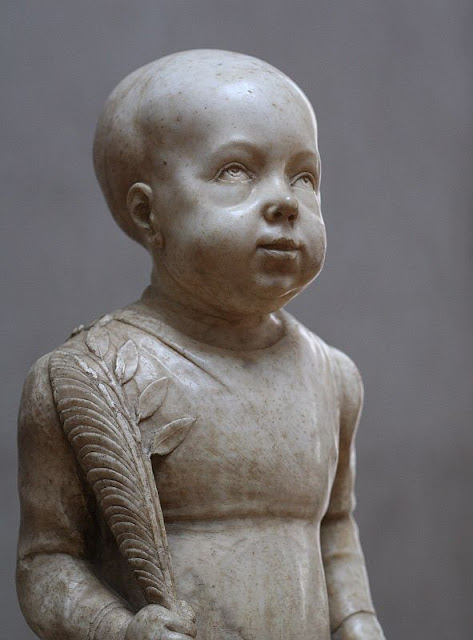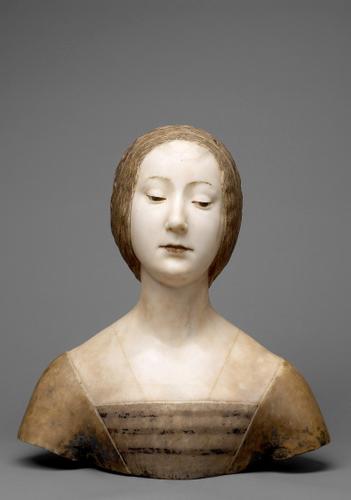Francesco Laurana, Saint Cyricus, ca. 1470-1480,
J. Paul Getty Museum
Francesco Laurana, Isabella of Aragon, ca. 1488,
Kunsthistorisches Museum, Vienna
With sculpting in stone the spacing between God, the universe, the cosmos and the planetary sphere are something that is representative in the description of the human form. Settignano and Donatello worked in such a way as to express the feeling of God in their hearts via their love of purpose and their understanding of the sublime being. The form that Saint John takes, not only physically in a sculpted ascension, is I feel, not something that has an equivalent elsewhere. Other divine offerings that were being contributed during a similar time were Saint Cyricus, ca. 1470-1480 and Isabella of Aragon, ca. 1488 by Francesco Laurana, these are exquisite in themselves but also have a completely different approach and message. One feels the purpose of sculpture during Italian Renaissance was a very direct response for a need to communicate a deeper feeling of the love of God that had previously been attributed with. Our relationship to our body in space is often something we take for granted but when we have to contemplate a divine purpose, a different equation is made. We see this in an artist like Cosme Tura who painted paintings of almost sculptured forms and we feel the relationship to God in these works. The works are highly emotional and you feel the artist communicating the emotional turmoil of his relationship to God through almost physically challenged forms expressing a highly charged emotional expression. You feel like there are strong Austro-Germanic connections and one is reminded of Grunewald and the spindly fingers of his crucifixion figures as well as his overly sized feet and the mass of thorns on his head, similar to a sacred headdress or a very bushy, thorn tree. We are also reminded of German wooden sculpture from Barvaria.
Cosme Tura, Pieta, c. 1460
Matthias Grunewald, Large Crucifixion,
c. 1523-1525, Staatliche Kunsthalle Karlsruhe



